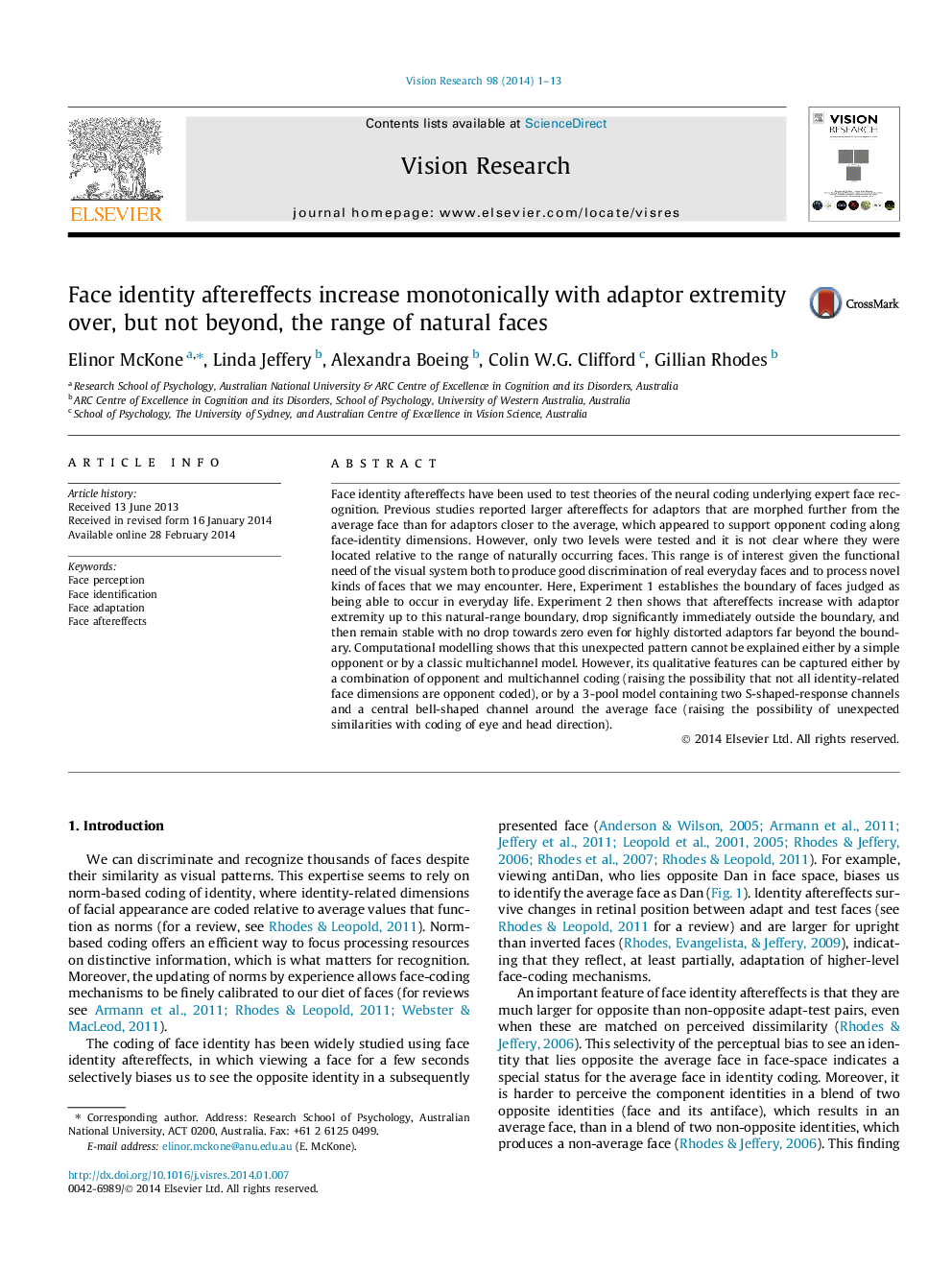| Article ID | Journal | Published Year | Pages | File Type |
|---|---|---|---|---|
| 6203507 | Vision Research | 2014 | 13 Pages |
â¢Face identity aftereffects increase with adaptor extremity within the natural range.â¢Aftereffects drop significantly, but then remain stable, beyond this range.â¢Neither simple opponent nor classic multichannel coding can explain these results.â¢A combination of opponent and multichannel coding can explain this pattern.â¢So can a 3-pool model with two S-shaped channels and a central bell-shaped channel.
Face identity aftereffects have been used to test theories of the neural coding underlying expert face recognition. Previous studies reported larger aftereffects for adaptors that are morphed further from the average face than for adaptors closer to the average, which appeared to support opponent coding along face-identity dimensions. However, only two levels were tested and it is not clear where they were located relative to the range of naturally occurring faces. This range is of interest given the functional need of the visual system both to produce good discrimination of real everyday faces and to process novel kinds of faces that we may encounter. Here, Experiment 1 establishes the boundary of faces judged as being able to occur in everyday life. Experiment 2 then shows that aftereffects increase with adaptor extremity up to this natural-range boundary, drop significantly immediately outside the boundary, and then remain stable with no drop towards zero even for highly distorted adaptors far beyond the boundary. Computational modelling shows that this unexpected pattern cannot be explained either by a simple opponent or by a classic multichannel model. However, its qualitative features can be captured either by a combination of opponent and multichannel coding (raising the possibility that not all identity-related face dimensions are opponent coded), or by a 3-pool model containing two S-shaped-response channels and a central bell-shaped channel around the average face (raising the possibility of unexpected similarities with coding of eye and head direction).
